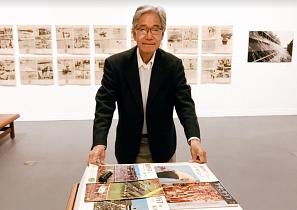‘Torch: 1932 Los Angeles Olympics Photos by Toyo Miyatake’ to Be Exhibited July 11 to Aug. 8 at JACCC
In 1932, Japanese American photographer Toyo Miyatake (1895-1979) was hired by the Japanese newspaper Asahi Shimbun to document the Los Angeles Summer Olympics. The Games were held during the Great Depression and many nations were unable to participate, but Japan sent the second-largest delegation, 131 athletes.
Miyatake caught many of the Japanese athletes’ triumphs, including Chuhei Nambu breaking the world record in the hop, step, and jump (triple jump), 14-year-old Kusuo Kitamura’s gold medal in the men’s 1500-meter freestyle swimming race (and still the youngest male swimmer to win gold at the Olympics), and Takeichi Nishi (“Baron Nishi”), who won Japan’s only gold medal in the equestrian show jumping individual event.
The Japanese team won seven gold medals, seven silver, and four bronze, and the Japanese community in Little Tokyo celebrated with a parade on First Street.
“Torch: 1932 Los Angeles Olympics Photos by Toyo Miyatake,” on display at the Japanese American Cultural and Community Center’s Doizaki Gallery starting July 11, is a unique look at this work. Accompanying the photos are translated poems from “Torch” (1933), a collection published in commemoration of the Olympics, written by Issei poets of Los Angeles, Hawaii, and beyond. Also on display will be one of Miyatake’s cameras, his own personal photo album from the Olympics, and Olympics memorabilia from 1932 and 1964.
For Japanese in the U.S., this was a complex time. Olympics nationalism is evident in both the photos and poems, echoing the expansionist militarism of the Japanese Empire. At the same time, years of anti-Asian exclusion and Alien Land Laws would eventually culminate in incarceration camps for Japanese Americans.
Miyatake was born in Kagawa Prefecture. With his mother and brothers, he joined his father in the U.S. in 1909, and settled in Little Tokyo. He studied photography under Harry K. Shigeta and was an active member of the Japanese Camera Club of Little Tokyo. He opened his own photo studio in 1923.





